How U.S. wine businesses buy and sell on the global market
Today, nearly one third of all purchasing on the global marketplace for wine is driven by U.S. wine businesses, up from just 1% in 2011. After a dip in activity in 2020 thanks to American tariffs on European wine, the market has bounced back.
In addition, America’s share of all wines sold on the global marketplace has risen 8-fold over the same period, driven by some big name cult wines from California. In the first half of 2021, wines from over 27 different AVAs were sold on the exchange to buyers across the world.
This report seeks to demystify the global fine wine marketplace and explain how wine businesses across America can take advantage of the increasing number of opportunities it presents.
Lucrative new opportunities
The global fine wine market consists of a vast, but exclusive, network of merchants, auction houses, investment companies, importers, wholesalers and retailers. These businesses hold stocks of fine and rare wines, or they know how to source it, or they are the first port of call for private individuals looking to sell their
collections. Any retailer who can tap this network will not only expand their supply of fine wines, but will also be able to buy wines at a significantly better price and volume; such wines typically cost between 30% and 50% less than the same wines in the U.S.

Tapping this network also offers the ability to acquire extremely rare wines, whether that’s a Napoleonic-era Madeira, or the last bottles of a wine that was originally sold on allocation.
Joining this market also opens the door to selling to international customers. As you will see, this is a good moment for U.S. retailers: Fine wine enthusiasts from Southeast Asia to Europe are increasingly seeking wines from California and are willing to pay a premium to get them.
Fortunately, accessing these new opportunities does not present the headaches one might expect around payments, logistics, and pricing.
Find out more about these lucrative opportunities…
The art of buying and selling wine globally
The U.S. wine market is a dynamic one, but because of the Three-Tier System, it is also complicated. This can limit the volume and variety of fine wine available. Sourcing wines internationally can be done in several ways.

The first is at auction, particularly in Hong Kong and London. Major houses like Sotheby’s, Bonham’s and Christie’s understand fine wine provenance, and can advise on how to import into the U.S. Fine wine auctions account for 10% of the global secondary market.
The second is to travel widely and build relationships with fine wine merchants and collectors. While this can be time-consuming and costly, a U.S. importer can ship any wines you find.
The third is to become a member of the global marketplace for wine merchants that offers over $100m of live trading
opportunities with 620+ fully vetted merchants across the globe. All members can see what bids and offers are being made, and the process of buying and selling is made simple through sophisticated software and an experienced team of logistics experts.
The global marketplace
Back in 2000, former stockbrokers James Miles and Justin Gibbs established Liv-ex (The London International Vintners Exchange) to be the global marketplace for the fine wine trade. They started with a group of 10 founding members, and a vision to make fine wine trading more transparent, efficient and safe.
Today, there are over 560 wine businesses from 43 countries participating on the exchange. Membership is restricted to the professional wine trade, and private collectors may not join, regardless of their enthusiasm or budget.
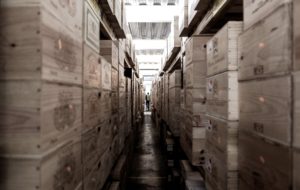
While the company remains based in London, it now also has bonded warehouses—secure storage where wine is held duty free—in Bordeaux, Beaune, California, and Hong Kong.
Members have access to the world’s most comprehensive database of real-time transaction prices, as well as exclusive market data and insights. There are more than $110 million worth of wine trading opportunities on the exchange at any time, and Liv-ex guarantees fast and reliable settlement of trades through a payments and global logistics network. Trading is anonymous.
Anyone in the supply chain can join Liv-ex whether they be wholesaler, importer, wine investment business, or retailer. As a benefit, the National Association of Wine Retailers (NAWR) offer their members a 50% discount off the Liv-ex joining fee.
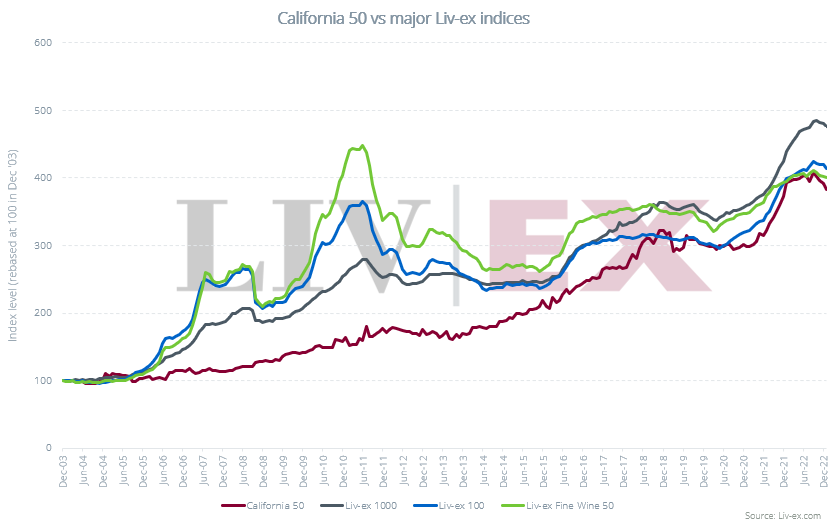
Join the global marketplace
U.S. activity is growing
Back in 2011, less than 1% of wine sold on the global marketplace went to American buyers. Today, U.S. businesses are the second-largest segment of buyers after the UK, which accounts for just over a third of buying.
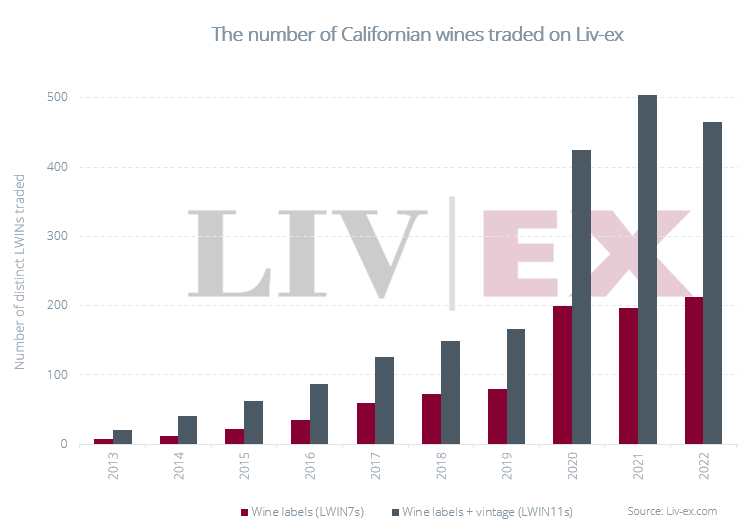
Over the same period, demand for U.S. wine has been rising. It now accounts for over 8% of trade by value, similar to Champagne. In 2011, the USA made up just a fraction of a percent. Read more in the recent report; “A Golden Era for the Golden State: Inside the Californian fine wine market”.
Not surprisingly, it’s the iconic California brands such as Screaming Eagle, Opus One, and Harlan Estate that are the most traded, but an increasing number of other wines are also of interest.
This is reflected in the growing number of American wines that have an LWIN, or Liv-ex Wine Identification Number. These 7 or 11-digit numbers, which act like an ISBN for wine, allow information about wine to be transferred seamlessly between systems.
To date, nearly 14,000 different U.S. labels have an LWIN. These come from 252 different AVAs (American Viticultural Areas), highlighting the breadth of interest in American wine. In 2020 alone, wine from 27 different AVAs was traded, demonstrating a global appetite for American wines.
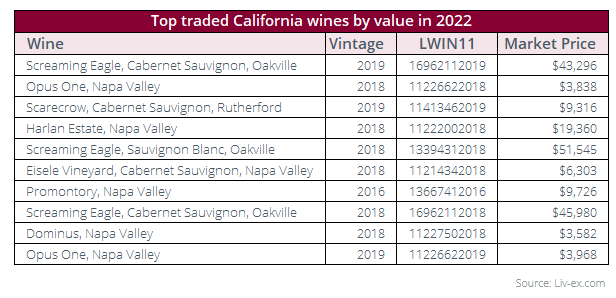
The Liv-ex Market Price is the best listed price for a wine in the secondary market. It is calculated from a large group of trusted international merchants in Sterling and standardized to 12x75cl. For the purpose of this article we have displayed them in $USD. For more information on the Liv-ex Market Price and how it is calculated, click here.
How safe is it?
Marketplaces work most effectively when all the parties trust one another—the more trust that is established, the more trading will take place. But for trust to endure, it must be verified.
Are buyers and sellers vetted?
Liv-ex insists that prospective members submit references as part their application before vetting them along with principals from member businesses. This is important because Liv-ex stands behind every trade done on the exchange. The result is that companies with access to the exchange represent reliable trading partners. No private collectors or investors are permitted. All traders are wine industry professionals.
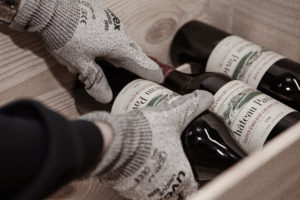
Can I have confidence in what I’m buying?
Sellers can either deliver to Liv-ex or use the weekly collection service that operates throughout Europe. This ensures wine is kept in optimum, secure, temperature-controlled conditions. Wine is scrutinized intensely. The levels of each wine are checked, as are the corks and capsules. Labels are put under black light and photographs are taken for comparison with an extensive database; Liv-ex photographs 89,000 cases of wine a year.
In the rare instances that the inspector detects an unusual or questionable bottle, they refer it to the Chateau. Buying and selling this way is perhaps one of the safest ways to trade fine wine internationally.
Buying on the global marketplace
U.S. wine businesses can browse, list a wine, post a bid, or buy instantly. If the seller is in Europe, Liv-ex collect the wine and deliver it to the buyer’s nominated Liv-ex warehouse.
Most of the trades done on Liv-ex are known as Standard in Bond (SIB). This means the wines have no condition issues, are held in bond, and are delivered to Liv-ex within two weeks of the trade taking place.
All wine entering the warehouse is inspected. If it passes, the buyer is invoiced and has until the following Friday to pay. The stock is released to the buyer’s nominated importer, who then ships it to the U.S. Taxes and duties only apply once the wine has entered the country.
Trades and payments can take place in U.S. dollars.
The role of the importer
The role of an importer is to bring the wine into the U.S. If you don’t have an existing relationship, Liv-ex can make an introduction. The importer can buy the wine on your behalf, arrange the shipping, and then invoice you. If the importer is also a member, you can do an internal transfer on the Liv-ex system.
Pre-sales and automated buying via API
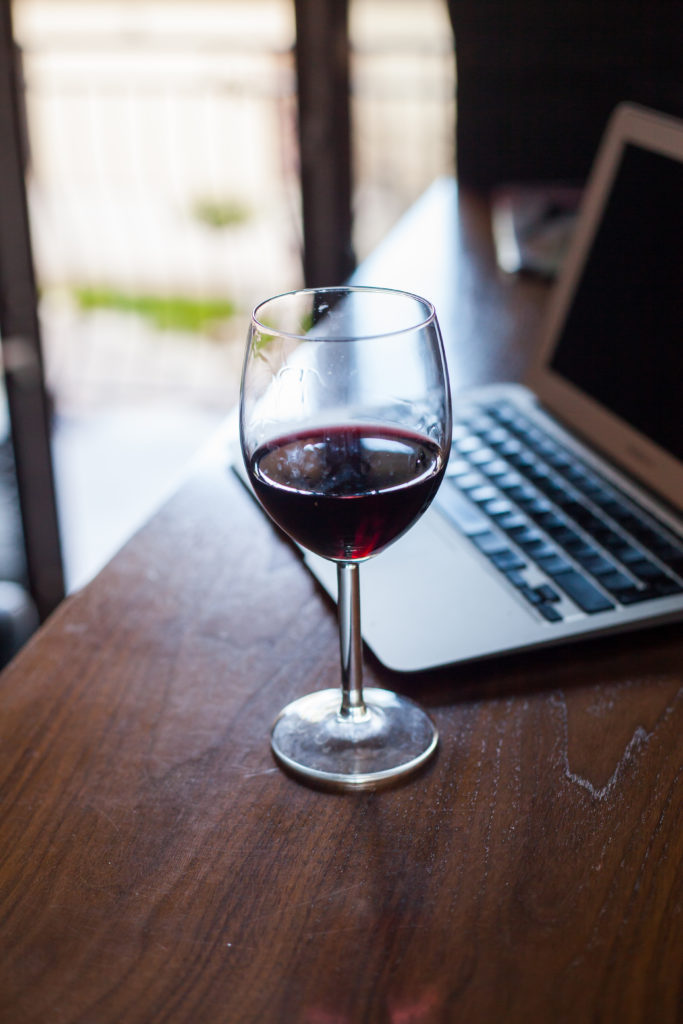
APIs or webservices can connect your ecommerce site directly to the global marketplace, letting you offer your customers pre-sales of fine wine. When wines of interest appear on the exchange, they show up on your site, with your desired margin added. When your customers order these wines, your system then buys them from Liv-ex automatically.
This means you can offer thousands of additional wines without tying up capital.
APIs also let you automatically bid and buy on the wines you’re looking for—even when you’re sleeping! This U.S. merchant increased their offering significantly this way, and saw annual sales growth of around 20% thereafter.
How to identify value from lists
Wine Matcher is an online tool that lets wine businesses work through lengthy wine lists more efficiently, to find buying and selling opportunities faster. They upload an Excel list—which might be their own, or an offer from a supplier or private collector. The tool matches those wines to the LWIN database and returns accurate prices from the exchange including the Liv-ex Market Price, last trade, and current bid and offer. By comparing these to prices already on the list, opportunities can be found. Valuations for customers’ portfolios can be done in the same way, at greater speed.
Buy and sell with reputable merchants worldwide
Selling your wines worldwide
U.S. wine businesses can reach a wider, global audience by listing stock live on the exchange at a chosen price. Another merchant or wine investment business, or one of their customers/investors if they are automated, will either buy at that price or place a bid.
The process
Once you have sold the wine, send it to a Liv-ex European warehouse. Sellers in California are offered a weekly pick-up service at a flat fee. Once the wine has been checked, the buyer will be invoiced and has until the following Friday to pay. This ensures you receive the money promptly.
Liv-ex then consolidates the wine and sends it to the buyer, using temperature-controlled shipping or air freight, handling all the export paperwork. Wines can be sent using services like FedEx or UPS, or Liv-ex can recommend freight forwarders.
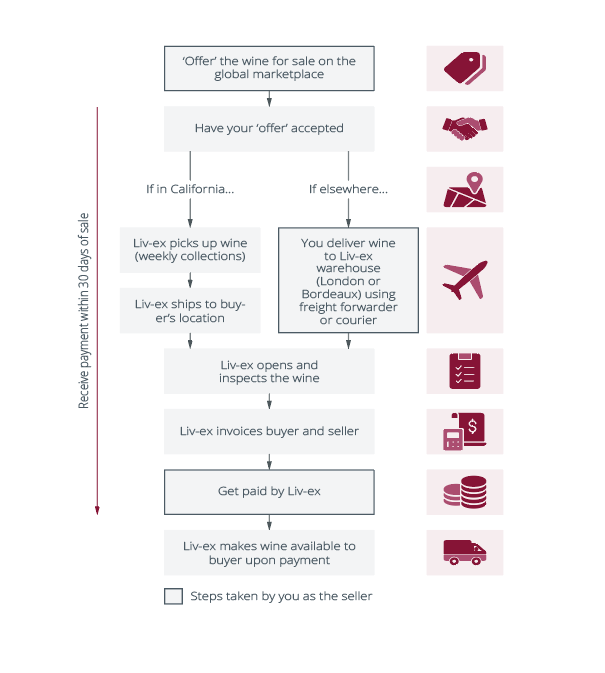
Some advice on selling fine wine overseas
Be aware that there are some special issues around selling European wines outside of the U.S. market. The strip label that is added to bottles for sale on the domestic market that show the Surgeon General’s warning, can make the wine less desirable to international buyers and discount the price.
There is, however, a growing appetite for Californian wine in both Southeast Asia and South America and, increasingly too, in Europe.
Sellers unsure of whether the U.S. or the international market is the right place for their wine can ask Liv-ex. We will look at our database and see what has sold previously, and at what price, and where the likely buyers are located.
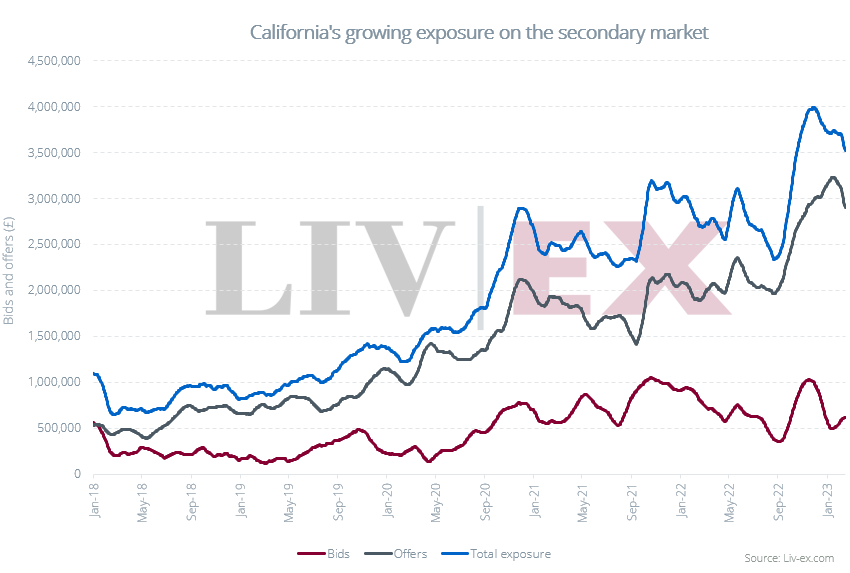
The legalities of buying and selling wine
If you are a wine professional based in the U.S., you are more than aware that the three-tier system makes the U.S. a complicated market for fine wine. Whether you can buy internationally largely depends on where you are based. In California and Washington D.C., for example, buying through Liv-ex is simple. Other states can be more complicated. Most states, however, offer plenty of opportunities for trading. And, regardless of location, you can sell globally. Liv-ex’s U.S. Team can clarify the situation in your state.
Final thoughts
The ability to buy and sell securely and efficiently worldwide is the main reason so many U.S. wine businesses have become members of Liv-ex. In addition, they get access to over 875 million price points for more than 320,000 wines, to inform their decisions. They see release and auction prices, as well as the prices of firm bids, offers, and last trades on the global marketplace.
Members receive market updates and insight via email and access to tools to help determine whether release prices represent fair value compared to critics’ scores and previous vintages. Trade and market prices going back 20 years are also available if a longer-term view of a wine’s value is needed.
Reliable, independent, and trusted
Liv-ex data is trusted by over 620+ wine businesses in 47 countries and is quoted by authorities like Bloomberg and Refinitiv (part of the London Stock Exchange Group) as the industry standard. To learn more, request a call from Liv-ex’s U.S. team.
Could Liv-ex work for my business?

